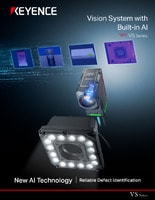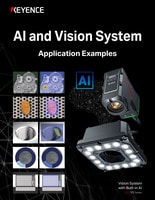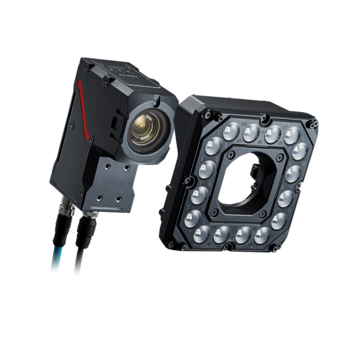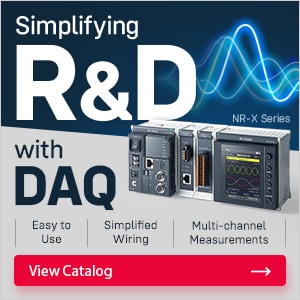Vision Systems
- Vision System with Built-in AI VS series
- Intuitive Vision System CV-X series
- Customizable Vision System XG-X series
- GigE camera and lighting for PC-based machine vision VJ series
- Inline 3D Inspection 3D Vision series
- 3D Vision-Guided Robotics 3D VGR series
- Line Scan Technology Line Scan series
- 2D Vision-Guided Robotics 2D VGR series
- LED Lighting CA-D series
- Lenses (for Machine Vision) CA-L series
- Machine Vision System Database VisionDatabase series
- Automotive
- Automation Equipment/Machine Building
- Electric Vehicles
- Medical Device Manufacturing
- Food/Beverage Packaging
- Semiconductor/Manufacturing Electronics
- Vision-Guided Robotics
- Solar
- Logistics
- Commodities
- Paper Manufacturing
- Machine Tools
- Electronic Device
- Printing
- Mining/Metals
- Fabric/Textile
- Tobacco
- Marine
- Aerospace
Deep Learning for Machine Vision: Basics and Applications
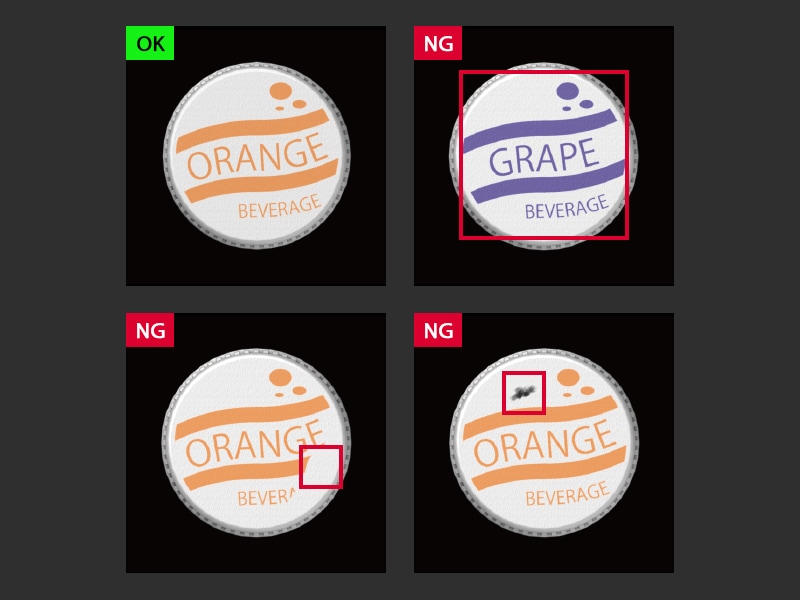
Deep learning for machine vision is completely changing quality control and inspection procedures. Manufacturers are now using this technology to automate at unprecedented levels while performing complex visual analyses that previously required human inspectors.
What is Deep Learning in Machine Vision?
A revolutionary advancement in industrial automation, deep learning for machine vision combines artificial neural networks with visual processing systems to achieve previously unattainable levels of image analysis. Deep learning helps vision systems understand complex images by using layers of neural networks to find patterns in data, unlike older methods that rely on fixed rules.
How Does Deep Learning Differ from Traditional Machine Vision?
When comparing rules-based machine vision vs deep learning, a key distinction is how they process information. Traditional machine vision employs predefined algorithms and parameters to detect specific features, dimensions, or flaws. These systems perform well in controlled environments with consistent lighting and predictable part presentation but struggle with variations and subjective quality assessments.
Deep learning, conversely, uses neural networks trained on numerous examples to recognize patterns and make decisions similar to human inspectors. The requirement for explicit programming of every possible defect scenario is eliminated, making it far more adaptable to real-world manufacturing environments with frequent product variations.
Key Components of Deep Learning for Visual Processing
Deep learning for vision systems requires several important components:
- Convolutional Neural Networks (CNNs) are specialized neural network structures designed for image processing.
- Training Datasets: Collections of labeled images that teach the system what constitutes acceptable and defective parts.
- Inference Engine: A neural network that makes real-time decisions based on its training.
- Hardware Acceleration: Specialized processors that enable the rapid processing of complex neural computations.
Why Deep Learning is Ideal for Complex Image Analysis
Deep learning excels in situations where traditional machine vision falls short—particularly when dealing with natural variations in products, subtle defects, or complex textures. By learning from examples rather than following rigid rules, these systems can make nuanced judgments similar to human inspectors while maintaining the speed and consistency of automated systems.
We’re here to provide you with more details.
Reach out today!

How Deep Learning Enhances Machine Vision Performance
Manufacturers see many benefits in incorporating deep learning into vision systems.
Improved Accuracy in Defect Detection and Quality Control
Neural networks can distinguish between serious defects and minor cosmetic variations. False rejections are reduced while genuine quality issues are detected. This technology is especially useful in electronics, automotive, and pharmaceutical manufacturing, which require both precision and flexibility.
Real-Time Adaptation to Changing Environments
Traditional systems must be recalibrated when conditions change, but deep learning-based vision can adjust to changes in lighting, part positioning, and environmental factors. This robustness makes deep learning for machine vision ideal for dynamic manufacturing environments where maintaining consistent inspection conditions is challenging.
Handling Variability in Manufacturing and Inspection
Products with natural variations—like flexible packaging, wood, textiles, or food—have historically been difficult to inspect automatically. Deep learning excels in these applications because it understands the acceptable range of variations while also identifying true defects, much like an experienced human inspector would.
Applications of Deep Learning in Machine Vision
Automated Defect Inspection in Manufacturing
Deep learning algorithms detect anomalies in applications ranging from semiconductor wafer inspection to automotive component validation. These would be nearly impossible to identify using conventional machine vision algorithms.
High-Precision Object Recognition and Classification
Deep learning for machine vision enables the classification of objects, parts, and assemblies beyond basic defect detection. These capabilities facilitate automated sorting, assembly verification, and sophisticated quality grading across diverse industries with minimal human intervention.
Pattern Matching and Anomaly Detection
Neural networks excel at identifying complex patterns and deviations within visual data. This capability extends to spectral imaging with deep learning, where multiple wavelengths beyond the visible spectrum can be analyzed to reveal defects imperceptible to human inspectors or conventional cameras.
OCR and Barcode Reading for Traceability
Enhanced OCR technology enables complete product tracking across the entire manufacturing process. Neural networks excel at interpreting damaged, incomplete, or low-quality codes and text that conventional vision systems struggle to decipher.
Discover more about this product.
Click here to book your demo.

KEYENCE Vision Technology and Deep Learning Integration
How KEYENCE Vision Systems Utilize Deep Learning
KEYENCE combines deep learning with rules-based machine vision in its product offerings, merging precision with adaptability. These hybrid systems deliver fast deployment while maintaining flexibility and performance.
Key Features of KEYENCE Machine Vision Solutions
KEYENCE deep learning-enhanced vision systems feature:
- Intuitive training interfaces that do not require programming expertise.
- Pre-trained models for common applications enable rapid deployment capabilities.
- Integrates seamlessly with both traditional vision tools and deep learning algorithms.
- Scalable processing options to meet application requirements.
Benefits of Using Deep Learning in Machine Vision Systems
Increased Efficiency and Productivity
Deep learning for machine vision boosts productivity by automating complex visual inspection tasks that used to require human judgment while maintaining consistent quality standards.
Reduction in False Positives and Improved Accuracy
The contextual understanding provided by neural networks significantly reduces false rejects compared to traditional machine vision, improving yield while still ensuring quality standards are met.
Lower Dependence on Human Supervision
Once properly trained, deep learning systems require minimal human oversight, freeing valuable personnel for more strategic tasks while ensuring consistent inspection results.
Cost Savings Through Predictive Maintenance and Process Automation
Beyond quality inspection, deep learning can analyze visual data to predict equipment failures before they take place, reducing costly downtime and extending machine lifecycles.
The Future of Deep Learning in Machine Vision
How KEYENCE is Shaping the Future of Machine Vision with Deep Learning
KEYENCE continues to advance the integration of deep learning and traditional machine vision. By developing systems that combine the dependability of established vision techniques with the adaptability of neural networks, businesses can now access sophisticated visual inspection.
Contact us today to discuss deep learning applications with our specialists.
Contact us to learn more about how our advanced technology can help take your business to the next level.
Contact Us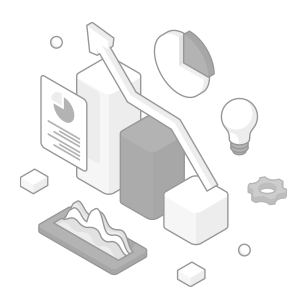
FAQs
What is the Difference Between Traditional Machine Vision and Deep Learning-Based Systems?
Traditional machine vision uses explicit programming and fixed algorithms to inspect specific features, while deep learning systems learn from examples to recognize patterns and make decisions similar to human inspectors.
Can Deep Learning-Based Vision Systems Be Used in All Industries?
Yes, deep learning for vision systems can benefit virtually any industry that requires visual inspection, though the implementation approach may vary based on specific requirements and constraints.
How Does KEYENCE Deep Learning Technology Enhance Its Machine Vision Systems?
KEYENCE combines traditional machine vision precision with deep learning adaptability, creating hybrid systems that offer the advantages of both approaches while minimizing limitations.
Are KEYENCE Vision Systems Easy to Integrate Into Existing Automation Processes?
Yes, KEYENCE designs its systems for straightforward integration with standard communication protocols, physical interfaces, and software compatibility with major automation platforms.
We’re here to provide you with more details.
Reach out today!

Related Downloads
Related Products
Industries
- Automotive
- Automation Equipment/Machine Building
- Electric Vehicles
- Medical Device Manufacturing
- Food/Beverage Packaging
- Semiconductor/Manufacturing Electronics
- Vision-Guided Robotics
- Solar
- Logistics
- Commodities
- Paper Manufacturing
- Machine Tools
- Electronic Device
- Printing
- Mining/Metals
- Fabric/Textile
- Tobacco
- Marine
- Aerospace

